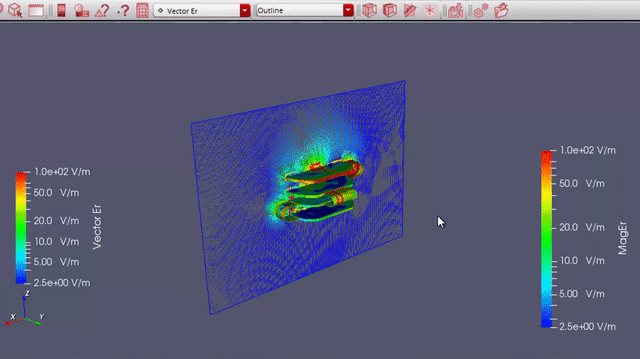Fast and Simple Rigid-Flex PCB Bending EM Analysis White Paper
Fill form to unlock content
Error - something went wrong!
Fill Out the Form to Access
Thank you!
3D PCB Electromagnetic (EM) Bending Analysis
Rigid-Flex PCBs have been used in many modern electronic devices (such as mobile phones, laptops, and wearables, among others), due to their form factor, light weight, and cost-effectiveness. Electromagnetic (EM) analysis of Rigid-Flex PCBs has always been a challenging task for many commercially available 3D numerical solver technologies (FEM and FDTD), due to the complexity in the 3D designs. Much of the complexity comes from bending of the board into small spaces and usage of hatched ground and power planes.

Top-of-the-line solvers these days are consistently evolving their numerical algorithms at work to provide solutions. Finite Difference Time Domain (FDTD) analysis as well as finite element modelling (FEM) are two of the types of calculations at work; however, within the total system analysis toolset there are also calculations using computational fluid dynamics (CFD), and subsects of FEM for volume or for analysis (FVM, FEA). FDTD analysis works to approximate solution over wide frequency ranges in single simulations, can determine effects of shielding, E and H field EMI calculations, broadband pulses, as well as what's particularly useful for rigid-flex boards in measuring both linear and nonlinear dielectric and magnetic materials. Whereas FEM is particularly useful for its capacity for structural analysis here, subdividing a larger system into smaller, simpler parts that enable the meshing to more accurately compute an otherwise unknown function.
In this paper, we first address the key challenges faced by the EM engineers and then propose a novel automated simulation workflow for a fast-to-market product development process. The proposed workflow, utilizing Cadence® Allegro® PCB Editor and Clarity™ 3D Solver, is the first of its kind in the PCB-EM community. Compared to alternative, highly manual processes, this flow is less error prone and very efficient in setting up the design for EM simulation. In addition, it runs faster than the other legacy 3DEM tools in the industry.
Whenever unique rigid-flex materials are involved in the PCB, there will be unique electromagnetic considerations. Additionally, radiation and EMI becomes even more complicated with additional geometries at work. With a 3D electromagnetic solver, you can rest easy with both scalable speed to achieve results on and even ahead of production schedule deadlines, as well as maintaining the utmost accuracy.